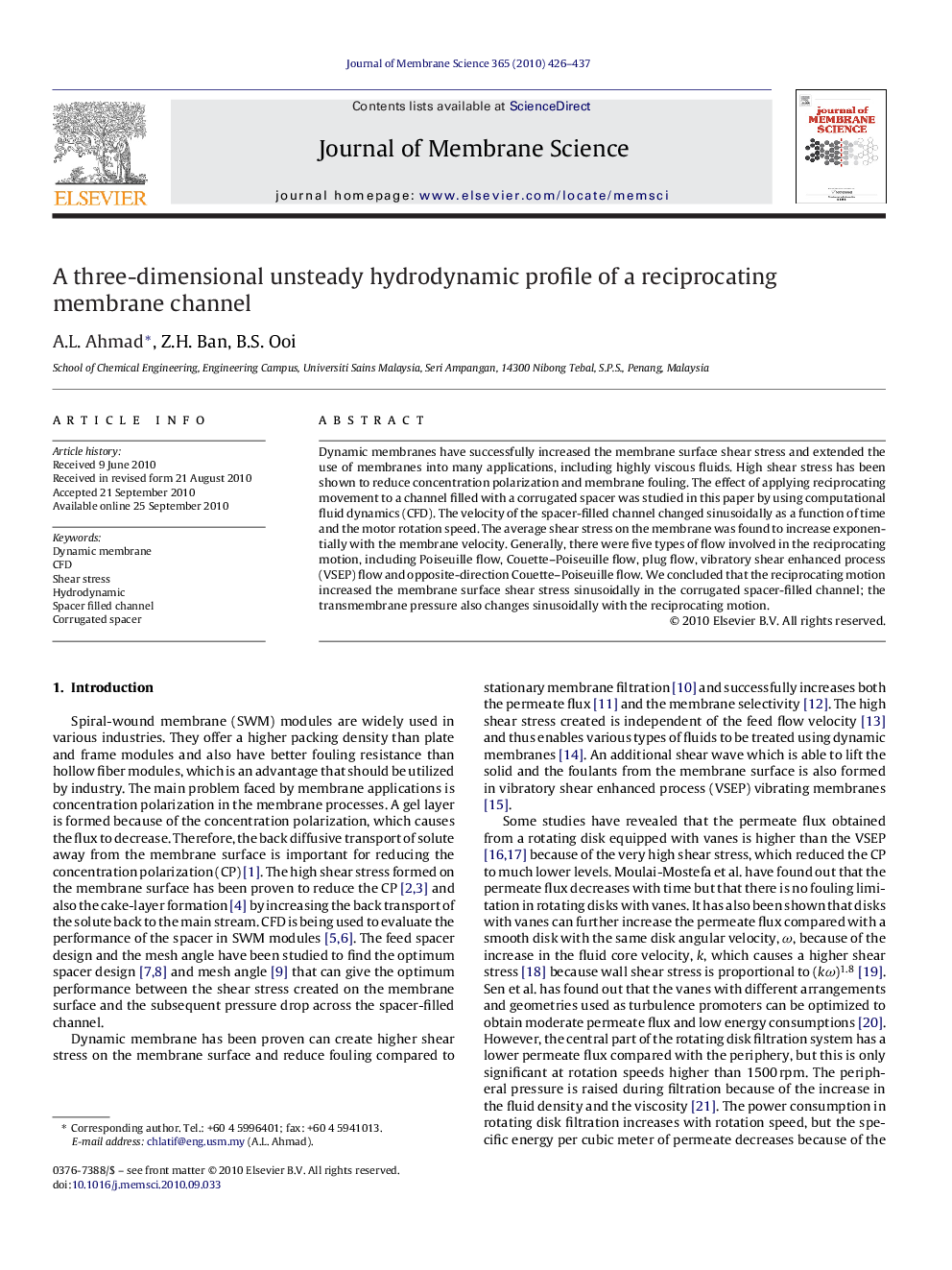| Article ID | Journal | Published Year | Pages | File Type |
|---|---|---|---|---|
| 636127 | Journal of Membrane Science | 2010 | 12 Pages |
Dynamic membranes have successfully increased the membrane surface shear stress and extended the use of membranes into many applications, including highly viscous fluids. High shear stress has been shown to reduce concentration polarization and membrane fouling. The effect of applying reciprocating movement to a channel filled with a corrugated spacer was studied in this paper by using computational fluid dynamics (CFD). The velocity of the spacer-filled channel changed sinusoidally as a function of time and the motor rotation speed. The average shear stress on the membrane was found to increase exponentially with the membrane velocity. Generally, there were five types of flow involved in the reciprocating motion, including Poiseuille flow, Couette–Poiseuille flow, plug flow, vibratory shear enhanced process (VSEP) flow and opposite-direction Couette–Poiseuille flow. We concluded that the reciprocating motion increased the membrane surface shear stress sinusoidally in the corrugated spacer-filled channel; the transmembrane pressure also changes sinusoidally with the reciprocating motion.
Research highlights▶ Maximum membrane shear stress increases exponentially with the membrane velocity. ▶ Reciprocating motion changes membrane surface shear stress sinusoidally. ▶ Transmembrane pressure changes sinusoidally with the reciprocating motion.
